Dialogue - Ryuta Fukumura [Part 2] -
![対 話 - 福村 龍太 [ 後 編 ] -](http://utusiki.com/cdn/shop/articles/153771990_104168568310929_8456479741285352331_n_07ace1b2-6cae-4809-b480-4e16c5731c6e.jpg?v=1744083277&width=640)
We want to create high-quality pottery, so we conduct countless repeated tests to achieve that goal.
"Silver glaze works take about four times longer than usual."
In a time when we are obsessed with efficiency and demand immediate results, how can we continue to take on new challenges without fear of failure?
There was an innocent and boundless spirit of inquiry and a determination to continue pursuing originality.
Following the first part of the interview tracing their journey so far, the second part will talk about the production process.
Being unique, not just efficient
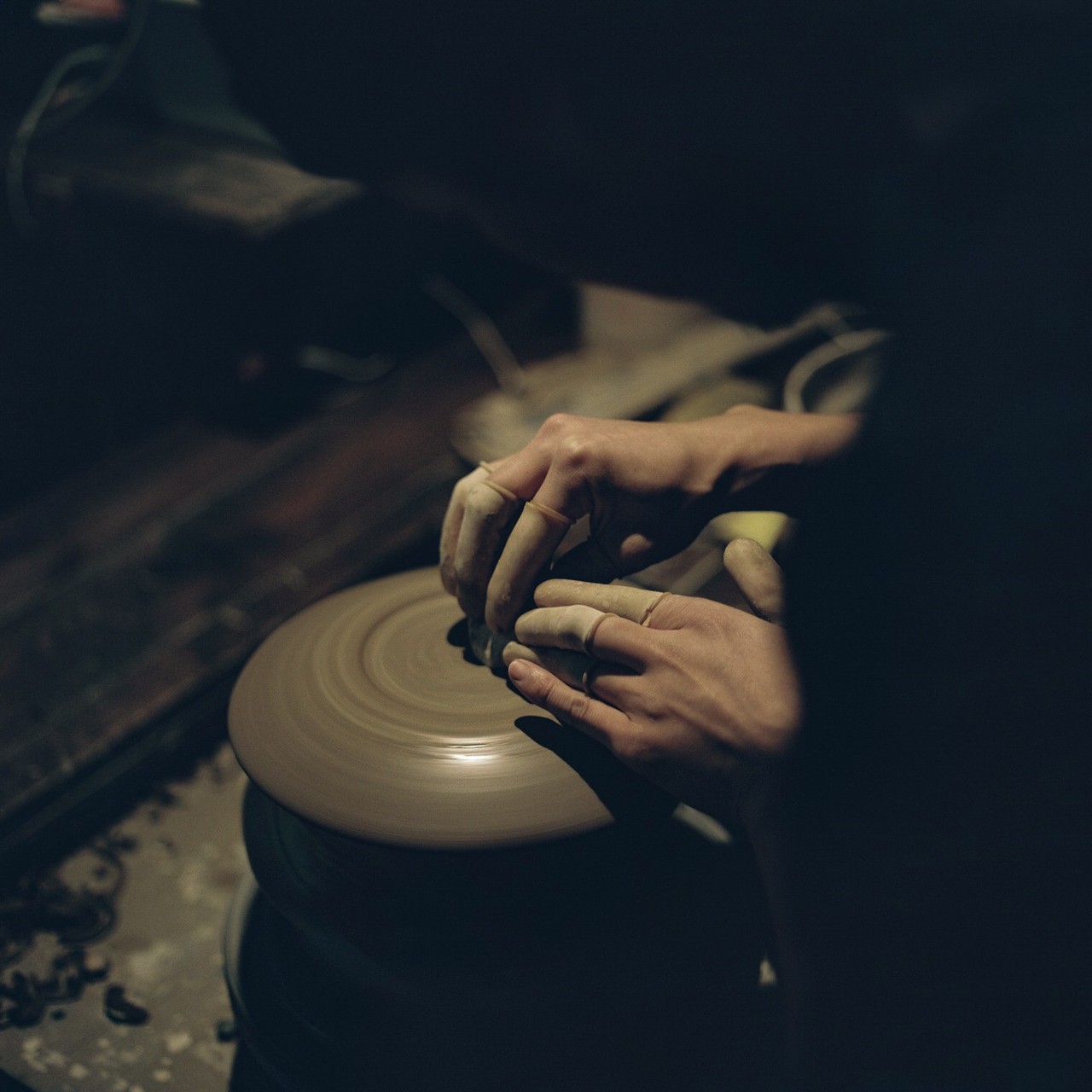 The process of scraping and smoothing the bottom and surface of the dish is repeated so many times that the iPhone's fingerprint authentication no longer works.
The process of scraping and smoothing the bottom and surface of the dish is repeated so many times that the iPhone's fingerprint authentication no longer works.
It is not easy to create a Ginzai piece. Even with a single color, the way the color comes out varies depending on the ratio of ingredients mixed into the glaze and the firing temperature. There are an infinite number of things to consider, such as the origin of the clay, the firing temperature, the density and location of the kiln, etc.
Fukumura has tested glazes hundreds of times, and through trial and error has discovered what ingredients to mix, in what proportions, and at what firing temperature to create the best possible color combination. Ginsai pieces are created with a great deal of time and effort.
"We first apply a white glaze and then a manganese glaze that produces bubbles, so the surface will be bumpy when the piece is fired. We scrape these off one by one with a glider and then polish it with paper until it's smooth. Then we apply a silver glaze on top and fire it again."
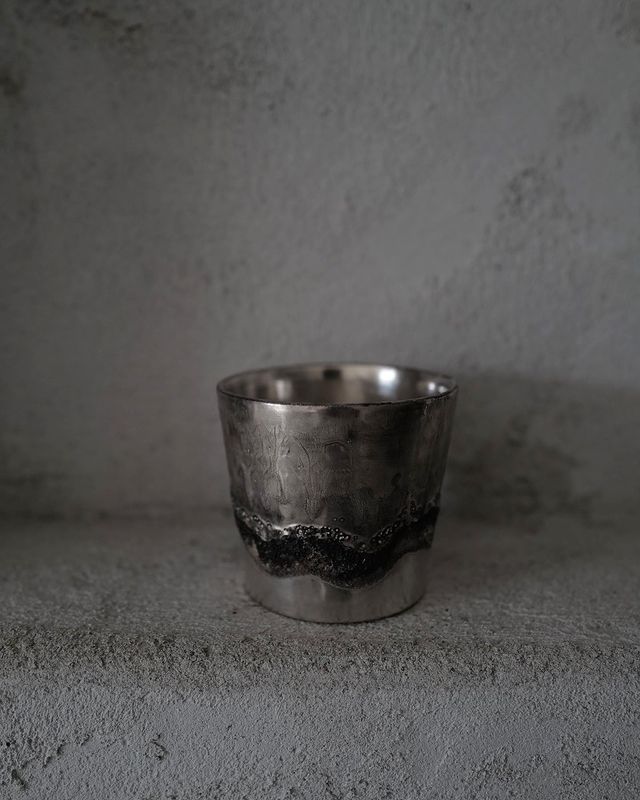 He remains alert until the piece is completed, taking notes on the temperature rise every 30 minutes as he fires the kiln.
He remains alert until the piece is completed, taking notes on the temperature rise every 30 minutes as he fires the kiln.
The work process can take several days or more. We place emphasis on uniqueness rather than efficiency, and do not seek reproducibility, which means that the products we create will remain special forever.
"There is some detailed work involved, but I just take the time and do it carefully," says Fukumura, who is constantly questioning the meaning of his work in manufacturing.
"I think that most silver-glazed pottery has been released into the world, but I want to express the next step in my image of silver-glazed pottery. I want to try things that no one else has tried before, such as combining it with a variety of glazes."
I want to express myself through my work rather than words
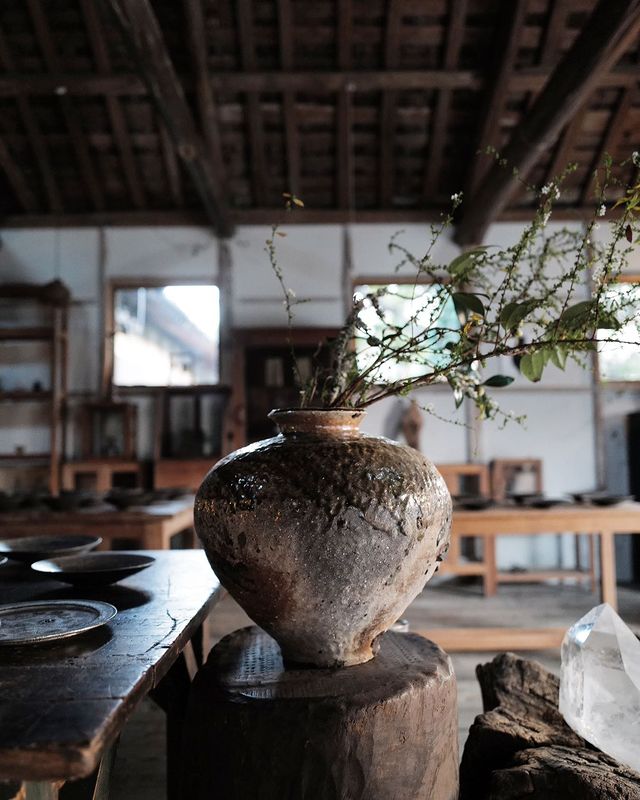 She began learning flower arranging, and as she created her pieces she vividly imagined not only the shape but also the scene of the flower arranging, as well as the feelings of the person using them.
She began learning flower arranging, and as she created her pieces she vividly imagined not only the shape but also the scene of the flower arranging, as well as the feelings of the person using them.
Rather than drawing out the shapes that come to his mind, Fukumura values the shapes that emerge naturally as he turns the potter's wheel.
"I like manga, and I particularly read the works of Inoue Takehiko. There's a scene in Slam Dunk where Rukawa Kaede closes his eyes and says, 'Trust the sensations of your body,' and shoots a free throw, and I think that when I'm turning a potter's wheel, I'm in a similar state."
There is no set form, and when he starts shaping, he moves his hands to find the right solution. In this process of craftsmanship where there is no right answer, he continues to create in silence and meets people who need his work. Among these people are professional chefs. He says he has had more opportunities to receive requests from up-and-coming chefs in restaurants overseas and in Japan to use his work.
"There was a time when I made a statement with more flashy textures, but I now take a step back and think about how to quietly express the food in a way that will make it stand out. I now try to become a canvas for the food, listening to customers' requests and searching for the best way to express it. It's exciting to see the presentation that exceeds my imagination."
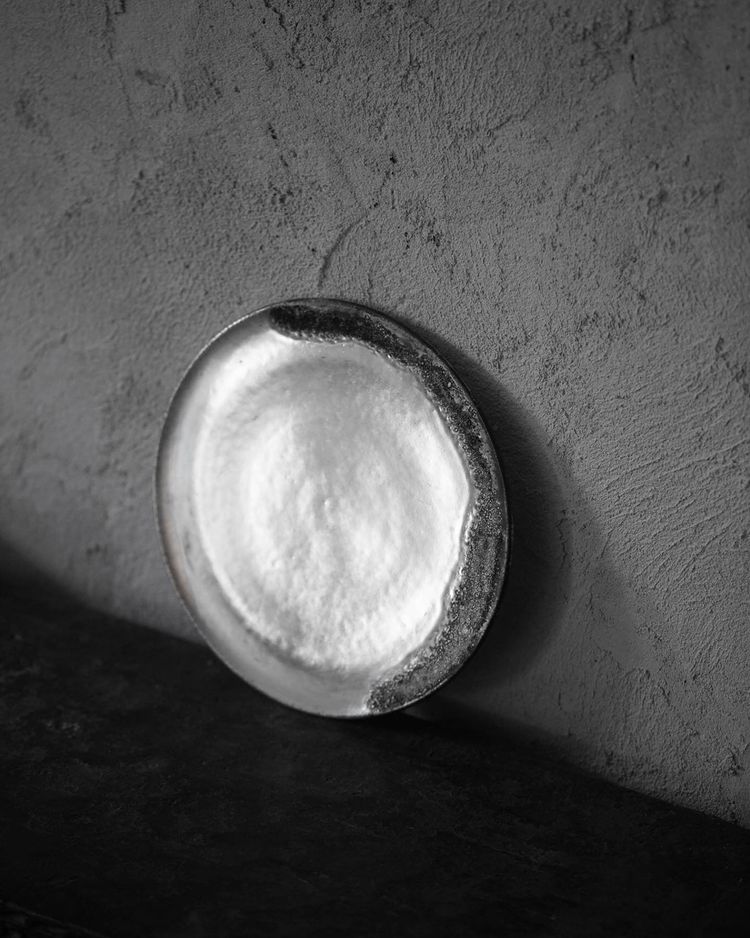 Fukumura says that he often gets inspiration for his works from sources other than pottery. When he has time, he collects antiques, Jomon and Yayoi pottery, sueki ware, and slipware.
Fukumura says that he often gets inspiration for his works from sources other than pottery. When he has time, he collects antiques, Jomon and Yayoi pottery, sueki ware, and slipware.
The silver and gold decorations that Fukumura creates have complex textures, and some people associate the expression of the plates with starry skies and mountains. They remain in the back of your mind, you look at them from different angles many times, and you want to pick them up again and again.
"I don't try to depict a specific expression in my pottery. But I think it's amazing how it can appear connected by chance. However, I don't like to put too many definitions about my work in words. I would be happy if the recipient enjoys it, valuing the feelings and sensibilities they have at the time."
A one-off combination
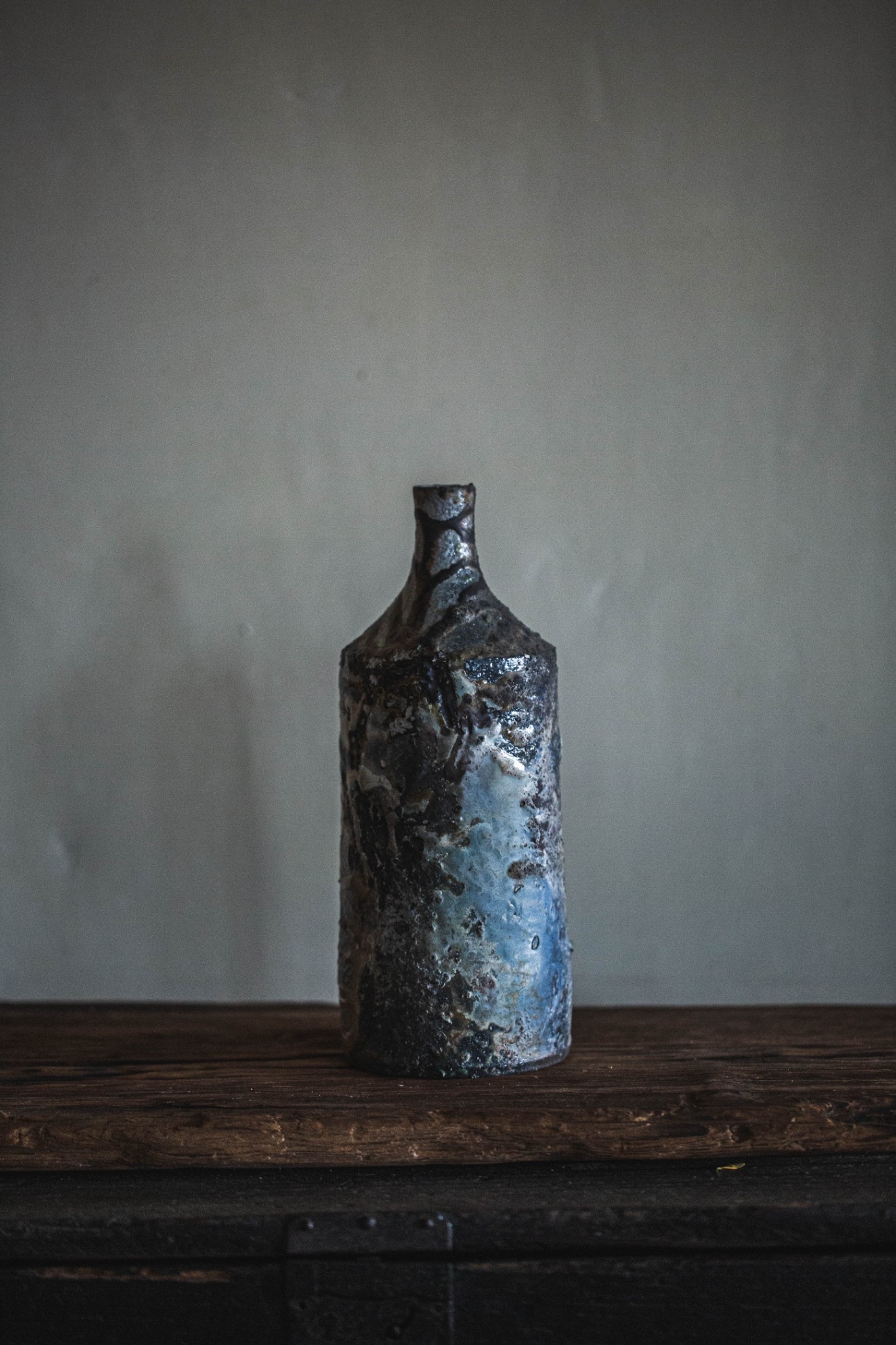

Whenever he gets stuck in the middle of a production, he picks up the book so he doesn't forget his original intentions, and recalls the feelings he had back then.
In the studio we visited, there were works that Fukumura had created up until now on display. They were all different in shape, size, and glaze used, and seemed to tell the story of the evolution of Fukumura's craftsmanship up to now.
For this interview, he brought along a piece that he has made that he feels particularly attached to. After graduating from university, he returned to Nichigetsu Kiln and fired a vase in a wood-fired kiln. Why did he choose this piece?
"I have more skill and knowledge now than I did at that time, but you can't aim for a look like this. For this piece, I put in too much firewood during the firing process, and the shelves all collapsed. The work was nearing the end at the time, so I just threw more firewood on top of it, and it was completed. I had originally envisioned a white vase, but I was shocked by how it had accidentally created a texture like that. At that time, I realized that different combinations, or rather firing methods, can be a style that suits me. Since then, I've been freely experimenting when firing in a wood-fired kiln, making repeated mistakes as I go."
Not limited to one style
"I'm not very good at talking," said Fukumura, who answered each question with a straight posture while repeating retakes during the shoot. The black overalls that he has been wearing for several years are his uniform while working on pottery.
The "Ceramic Artist Ryuta Fukumura Exhibition" began on February 20th. Hundreds of cups and dishes made in wood-fired kilns, from silver glaze to ceramics, were on display, and as the days passed, many of the works were sold out.
Fukumura-san creates both works that use metal glazes and those that utilize the texture of the earth. This is because he does not want to be limited to one style, but always wants to try new things.
"Silver glaze is fired at a low temperature, so we use electric and gas kilns, which make it relatively easy to control the heat. In the future, I would like to increase the number of works that are poured with ash, which is only possible in a wood-fired kiln. Even when you take meticulous care with the potter's wheel, the glaze, and the condition of the kiln, there is still room for accidental beauty to creep in, which is what is interesting about wood-fired kilns." 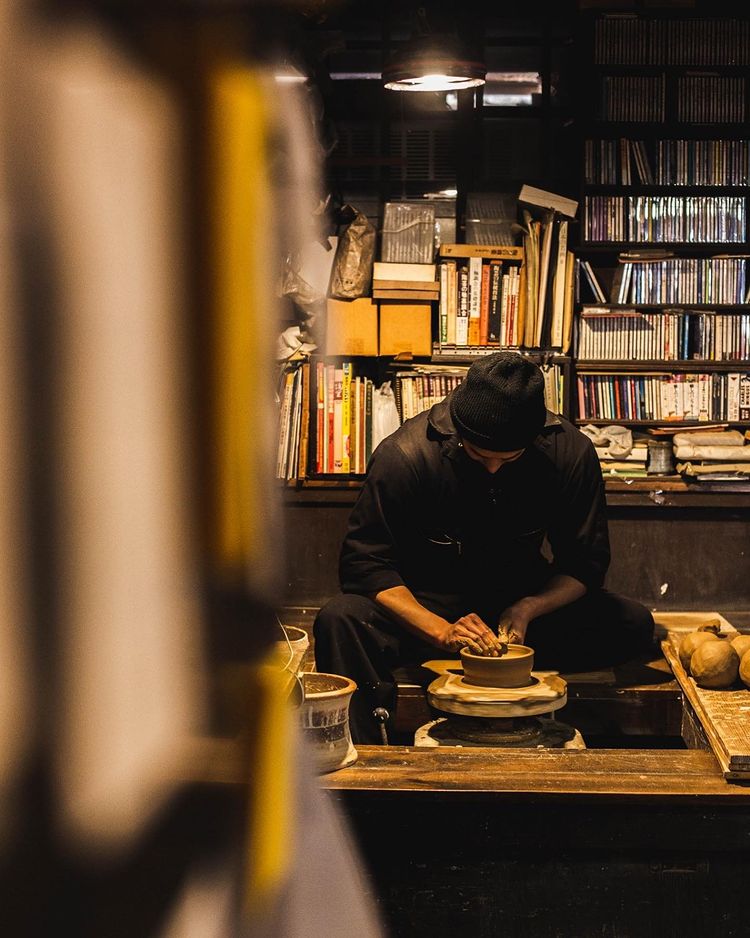 While working on his pottery, he sometimes plays his favorite hip-hop music from the speakers. When he visited before the exhibition, he had "TRAINING DAYS" by "THA BLUE HERB" on repeat.
While working on his pottery, he sometimes plays his favorite hip-hop music from the speakers. When he visited before the exhibition, he had "TRAINING DAYS" by "THA BLUE HERB" on repeat.
This exhibition attracted so much attention that people lined up before it even opened. How does Fukumura himself view the current situation?
"Honestly, I'm not too conscious of the trends of the times or categorization, but rather I think about how I approach my work. I always have the desire to create new things, so I will continue to work on my creations following my curiosity. To be honest, I don't have a specific idea of what I want to create right now, but I am always looking to make small changes within myself in the things I create. I will keep trying, even if I fail repeatedly, and see how it will be in five or ten years. That's what I'm most looking forward to."
- Ryuta Fukumura
- Born in 1989. Lives in Yoshii-cho, Ukiha City, Fukuoka Prefecture. After graduating from the Kyushu Institute of Design's ceramics course, he became a second-generation potter at Nichigetsugama. In exploring his expression methods, he makes use of a variety of materials, including minerals, natural ash, and silver glaze, and pursues the possibilities of the beauty that glazes can bring to the table. Always grateful to the earth, he challenges himself to create a variety of expressions using unconventional pottery methods.
After this conversation, his straightforward attitude strikes a chord with people. During the exhibition, Fukumura brought over 100 additional pieces, and the Utsushiki space took on a different look every day. His passion was transmitted to the customers through the pieces, and it was impressive to see him take the pieces in his hands with a serious look in his eyes while imagining how he would use them. Utsuwa brings richness to our daily lives, and is essential for living a fulfilling life. I feel that the joy of using a piece increases not only by knowing the quality of the piece, but also by knowing the background that lies behind it. I thought about this again while sipping coffee from a silver-glazed cup that I picked up during the exhibition.
Interviewer and writer: Yoshiaki Ono
 Ceramicist Ryuta Fukumura Exhibition Dates: Saturday, February 20th, 2021 - Sunday, February 28th, 2021
Ceramicist Ryuta Fukumura Exhibition Dates: Saturday, February 20th, 2021 - Sunday, February 28th, 2021
*No breaks during the period 13:00-18:00
![対 話 - 福村 龍太 [ 前 編 ] -](http://utusiki.com/cdn/shop/articles/c774566e124d143cac0df067b3c61be9a_4620693218522666028_210208_2.jpg?v=1744082251&width=1280)
